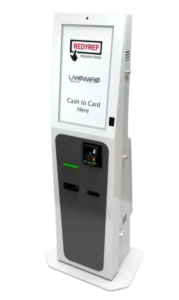Telehealth has come a long way from its earliest days. What started as a novel idea to reach patients in remote areas has evolved into a sophisticated system of care delivery, deeply integrated into the fabric of modern healthcare. Among the most significant advances in this field are interactive telehealth kiosks, which are redefining the accessibility, efficiency, and quality of medical consultations.
The Dawn of Telehealth
The idea of telehealth originated with the goal of overcoming geographical barriers to quality healthcare access. Initially, it relied on telephone consultations and, later, video conferencing tools to connect patients with healthcare providers. These methods, although innovative, were limited by technology availability, quality of connection, and widespread adoption.
Advances in Technology and Healthcare Delivery
The rapid advancement of technology, particularly in the realms of connectivity, digital imaging, and user interface has paved the way for more sophisticated telehealth solutions. The introduction of high-speed internet and mobile devices brought healthcare services to the fingertips of users, expanding the scope of telemedicine beyond simple consultations to include remote monitoring, e-prescriptions, and access to electronic health records.
The Rise of Digital Kiosks in Telehealth
As telehealth evolved, the need for more accessible and integrated solutions became apparent. Enter digital kiosks: standalone, interactive terminals designed to facilitate a wide range of healthcare services. These kiosks mark a significant leap forward, offering not just remote consultations but a comprehensive suite of healthcare services that include symptom checking, registration, payment processing, and information dissemination.
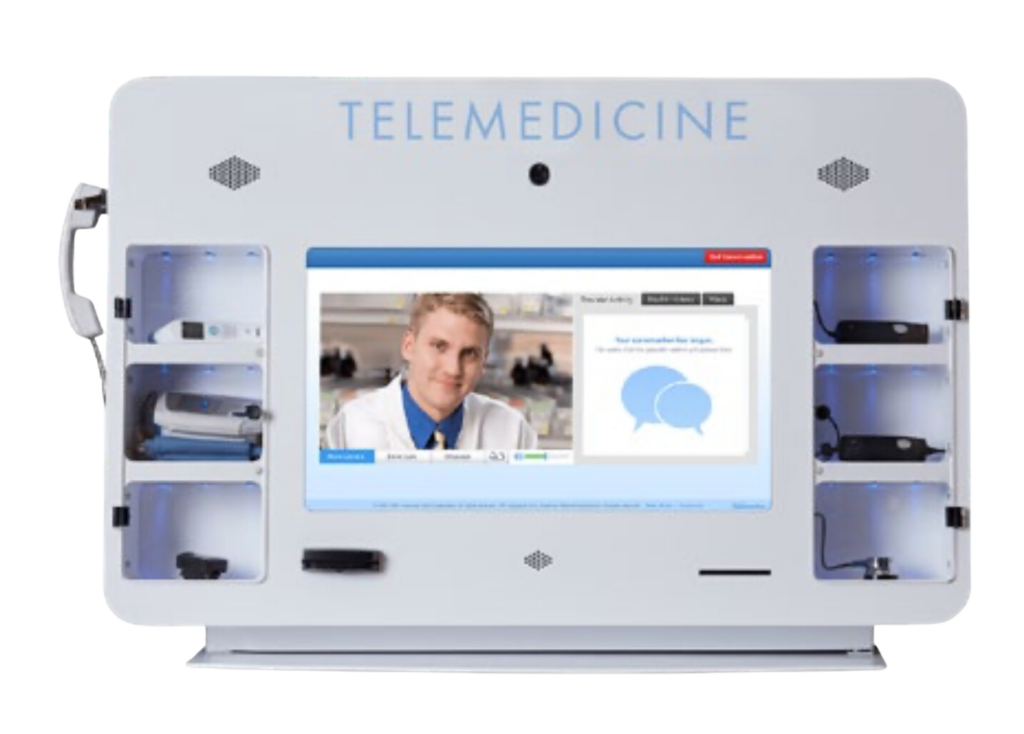
Key Advances in Telehealth Kiosks
- Interactivity and User Experience: Modern telehealth kiosks are designed with a focus on user experience, featuring intuitive interfaces that cater to patients of all ages and tech-savviness levels. This ease of use is critical in making healthcare more accessible to the broader population.
- Integrated Diagnostic Tools: Many kiosks now come equipped with integrated diagnostic tools, such as blood pressure cuffs, thermometers, and even blood glucose monitors. These tools enable the kiosk to collect vital health data during the consultation, providing healthcare providers with the information needed to make accurate diagnoses and recommendations.
- Enhanced Privacy and Security: With the adoption of ultra-modern encryption methods and compliance with healthcare regulations such as HIPAA in the United States, telemedicine kiosks ensure patient data is kept secure and private, addressing one of the early concerns with digital health services.
- Accessibility: Strategically placed in pharmacies, hospitals, and even retail locations, telehealth kiosks bring healthcare services to where the people are, significantly reducing barriers to access.
The Benefits of Telemedicine Kiosks
- Reduced Wait Times and Improved Efficiency: By streamlining the consultation process and reducing the need for in-person visits, telehealth kiosks can significantly cut down wait times and improve the overall efficiency of healthcare delivery.
- Increased Access to Care: For individuals in remote or underserved areas, telehealth kiosks offer a vital link to healthcare services that might otherwise be inaccessible.
- Cost-Effectiveness: By reducing the reliance on physical infrastructure and in-person consultations, telemedicine kiosks can offer a more cost-effective solution for both healthcare providers and patients.
- Support for Healthcare Systems: In times of high demand, such as during a pandemic, telehealth kiosks can alleviate pressure on traditional healthcare systems by providing an alternative means for non-emergency consultations and screenings.
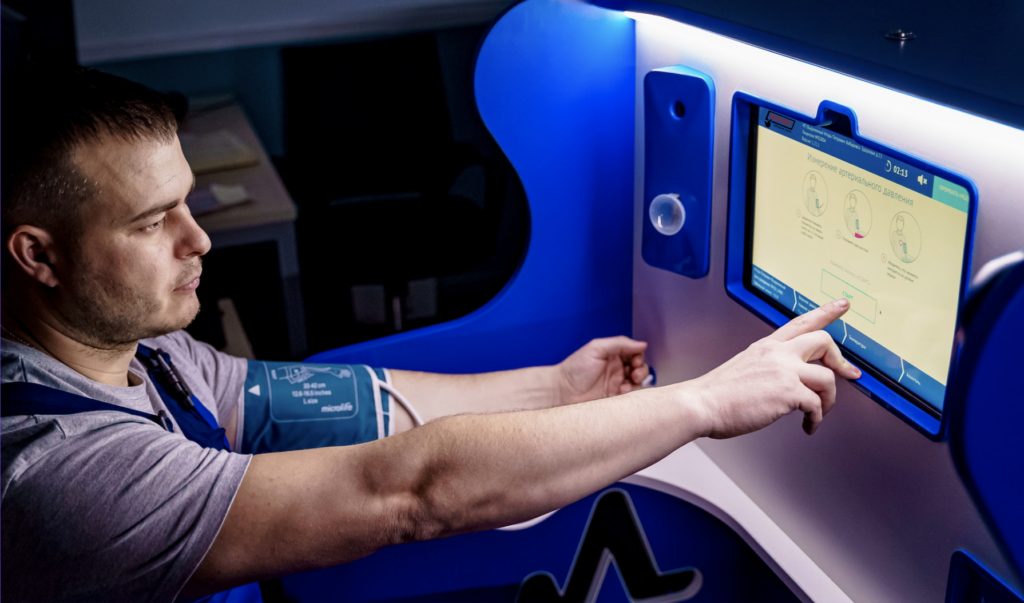
The Future of Telehealth Kiosks
As we look to the future, the potential for telehealth kiosks to revolutionize healthcare delivery is massive. And with revolutions in AI and machine learning, we can anticipate even more personalized and efficient healthcare services delivered through these kiosks. The integration of telemedicine into a broader digital health ecosystem, connecting patients with a wide network of healthcare professionals and services, will further enhance the quality and accessibility of care.
The evolution of telehealth from simple phone-based consultations to the sophisticated digital kiosks of today represents a significant advancement in our quest to make healthcare more accessible, efficient, and patient-centered. As they become more integrated into our healthcare landscape, they hold the promise of shaping a future where quality medical care is within easy reach of everyone, regardless of location or circumstance. The journey of telehealth is far from over, and the role of digital kiosks in its future looks brighter than ever.
Telemedicine has emerged as a major force in healthcare, reshaping how patients access and receive care. As a leading manufacturer of interactive telehealth and telemedicine kiosks, we at REDYREF are at the forefront of this transformation, offering solutions that blend the convenience of technology with the personalized touch of traditional healthcare. Understanding that the introduction of new technology often brings questions and concerns, we wanted to take some time to address the most common question we’ve heard from our customers’ patients regarding telehealth kiosks.

1. What Is a Telemedicine Kiosk?
A telemedicine kiosk is a standalone station equipped with interactive tools and technology designed for virtual health consultations. These kiosks provide a private space where patients can communicate with healthcare professionals via video conferencing, access health information, and utilize integrated medical devices for basic diagnostic tests, all under the umbrella of telemedicine.
2. How Does a Telehealth Kiosk Ensure My Privacy?
Privacy and security are paramount in the design and operation of our telehealth kiosks. Each kiosk is equipped with advanced encryption protocols to protect data transmission, ensuring that your personal and medical information remains confidential. Additionally, our kiosks comply with strict healthcare regulations, such as HIPAA, to safeguard your privacy at every step of your telemedicine consultation.
3. Is Using a Telemedicine Kiosk Difficult?
We understand the importance of accessibility and ease of use in healthcare technology. Our telehealth kiosks feature intuitive, user-friendly interfaces, making it easy for individuals of all ages and technological abilities to navigate. On-screen instructions guide you through each step of the process, from initiating a consultation to conducting diagnostic tests, ensuring a seamless and stress-free experience.
4. Can I Trust the Quality of Care Received Through a Telehealth Kiosk?
Telehealth kiosks are designed to complement traditional healthcare services, providing an additional avenue for receiving care. Consultations conducted via our kiosks are held to the same high standards as in-person visits. Healthcare professionals can perform thorough assessments, offer diagnoses, and prescribe treatments through the telemedicine platform, ensuring you receive quality care regardless of your physical location.
5. What Types of Healthcare Services Can I Access Through a Telemedicine Kiosk?
Our telemedicine kiosks offer a wide range of services, from routine check-ups and urgent care consultations to mental health support and specialist referrals. Integrated diagnostic tools, such as blood pressure monitors and thermometers, enable healthcare providers to perform basic assessments. The flexibility and breadth of services available make telehealth kiosks a convenient option for various healthcare needs.

6. How Do Telemedicine Kiosks Benefit Me?
Telemedicine kiosks offer numerous benefits, including increased access to care, reduced wait times, and the convenience of receiving healthcare services without the need to travel. For those in remote or underserved areas, telehealth can provide a vital connection to healthcare providers. Additionally, by offering a contactless alternative to in-person visits, telemedicine kiosks can reduce the risk of infectious disease transmission, contributing to a safer healthcare environment for all.
7. Are Telehealth Kiosk Consultations Covered by Insurance?
Many insurance providers recognize the value of telehealth and offer coverage for services rendered through telehealth kiosks, similar to traditional in-person visits. Coverage can vary based on your insurance plan and location. We recommend checking with your insurance provider to understand your coverage for these types of medical services.
8. Can I Access My Medical Records Through a Telehealth Kiosk?
Yes, some telehealth kiosks do allow patients to access their medical records, and do it securely. By logging into a secure portal, you can view your health history, test results, and summaries of previous consultations. This feature empowers patients to take an active role in managing their health.
9. How Do Telemedicine Kiosks Handle Emergency Situations?
While telemedicine kiosks are equipped for routine and urgent care consultations, they are not designed for handling medical emergencies. In case of an emergency, it's crucial to seek immediate help from emergency services or go to the nearest hospital. Telehealth providers can offer guidance and support in directing patients to the appropriate level of care when needed.
10. What Happens If I Need a Physical Examination?
Telemedicine kiosks are equipped with various diagnostic tools for basic health assessments, from blood pressure monitors to infrared thermometers. However, if your condition requires a more detailed physical examination or specialized tests, the healthcare provider may refer you to a physical location for further evaluation. They can also recommend follow-up care or specialist consultations as necessary.

11. Can I Choose My Healthcare Provider for a Kiosk Consultation?
Yes, depending on the telehealth platform and the availability of healthcare professionals, patients can often choose their preferred provider for a consultation. This feature allows patients to maintain continuity of care by consulting with a provider familiar with their health history.
12. What Measures Are in Place to Ensure the Cleanliness of Telehealth Kiosks?
The safety and well-being of patients are paramount. Telehealth kiosks are regularly sanitized and maintained to meet high hygiene standards. Additionally, kiosks are designed with easy-to-clean surfaces, and hand sanitizer stations are often provided for use before and after consultations to further ensure a safe and clean environment.
13. How Do I Get Started with a Telemedicine Kiosk Consultation?
Getting started is straightforward. Users are guided through a simple registration process directly at the kiosk. This typically involves entering basic personal information and health history. Once registered, you can initiate a consultation, often with minimal wait times, making accessing healthcare services quick and convenient.
REDYREF: Committed to Quality, Virtual Patient Care
As telehealth continues to evolve, we are dedicated to ensuring our telemedicine kiosks address the needs and concerns of patients, making healthcare more accessible, secure, and efficient. By providing answers to these frequently asked questions, we aim to demystify telehealth and encourage more individuals to embrace this innovative healthcare delivery method. With a commitment to patient care and technological excellence, REDYREF's telemedicine kiosks are paving the way for a future where quality healthcare is within everyone's reach, anytime and anywhere.
The advent of artificial intelligence (AI) and machine learning (ML) in digital kiosks heralds a new era of personalized consumer engagement, transforming impersonal self-service transactions into customized interactions that cater to the unique preferences of each user.
7 Key Technological Advancements in AI and ML That Will Revolutionize Personalization in Digital Kiosks
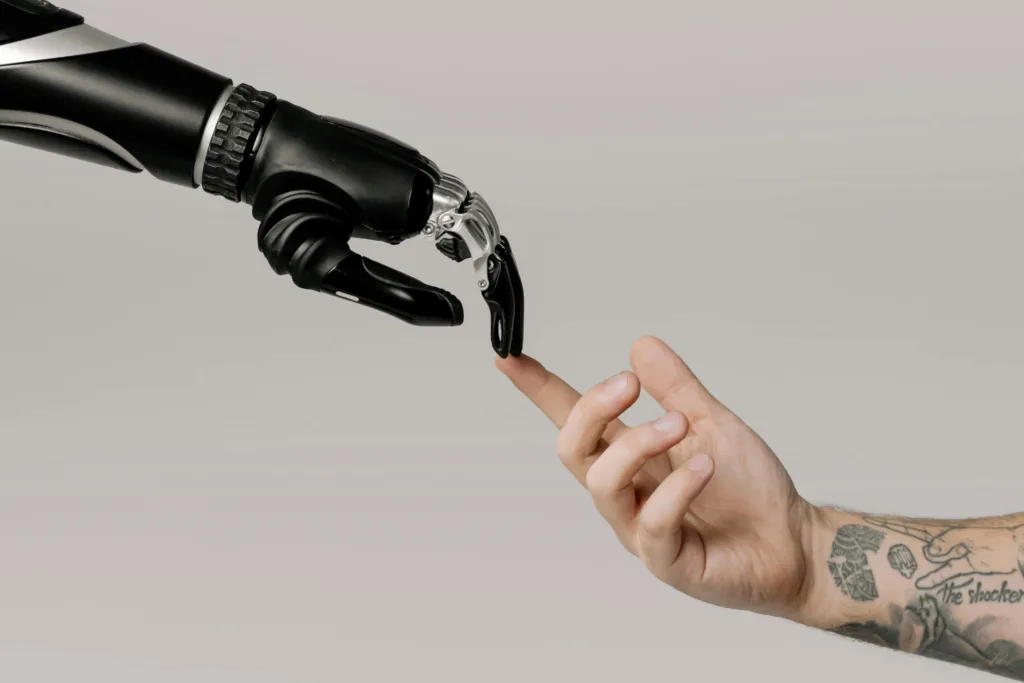
1. Dynamic User Profiles
AI and ML algorithms create dynamic user profiles by continuously gathering and analyzing data from interactions, purchases, and even dwell times on certain screens. These profiles are then used to understand user preferences deeply and predict future needs, enabling kiosks to offer personalized greetings, recommend products, or suggest services that resonate with individual users.
2. Contextual Awareness
Beyond simple transaction history, these intelligent systems incorporate contextual data such as time of day, location, and even weather conditions to make more relevant recommendations. For instance, a self-service kiosk in a shopping mall might suggest indoor activities on a rainy day or promote sunscreen and sunglasses during a heatwave, enhancing the relevance and timeliness of its suggestions.
3. Adaptive User Interfaces
The user interface (UI) of kiosks evolves to match the preferences and behavior patterns of the user. For individuals who prefer visual over textual information, the kiosk might display more images and videos. Similarly, for users who frequently seek specific services, the kiosk can prioritize these options in the menu, making the interface more intuitive and user-friendly.
4. Predictive Recommendations
Leveraging predictive analytics, kiosks can forecast future user needs based on historical data and broader trends. This could involve suggesting a refill or replacement for a product based on its typical usage cycle or recommending a new coffee flavor that matches the user's taste profile but hasn't been tried yet.
5. Real-time Feedback Loops
Digital kiosks equipped with AI and ML capabilities can implement real-time feedback loops, allowing them to adjust recommendations and services based on immediate user reactions. If a user consistently ignores a certain type of recommendation, the system learns from this behavior and adjusts its future suggestions accordingly.
6. Enhanced Engagement Through Gamification
Personalization also extends to gamified experiences, where users earn rewards, discounts, or badges based on their interaction with the kiosk. This approach not only makes the shopping experience more engaging but also encourages repeat visits and loyalty by providing a tailored reward system.
7. Seamless Omnichannel Integration
AI and ML enable a seamless omnichannel experience by syncing user preferences and histories across multiple platforms. A recommendation made by a self-service kiosk can be reflected in the user's mobile app or online account, providing a cohesive and personalized experience regardless of the channel.
Through these sophisticated applications of AI and ML technology, digital kiosks are set to offer unprecedented levels of personalization at scale, turning every interaction into a tailored experience that delights users, enhances satisfaction, and drives loyalty. This is not just a futuristic vision but a tangible advancement that REDYREF is actively pursuing. By harnessing these technologies, we aim to create a more personalized, secure, and efficient environment for users, ensuring that our kiosks not only meet the current needs of customers but also anticipate and adapt to their future demands.
Choosing the right partner for digital kiosk manufacturing goes beyond just assessing essential capabilities; it's about finding a provider that can deliver an excellent customer experience while also simplifying your supply chain. REDYREF stands out as a kiosk maker not just for our manufacturing expertise, but also for the extensive value-added services we offer in order to make your projects more efficient, cost-effective, and streamlined. Here are 7 ways we make a difference for you:
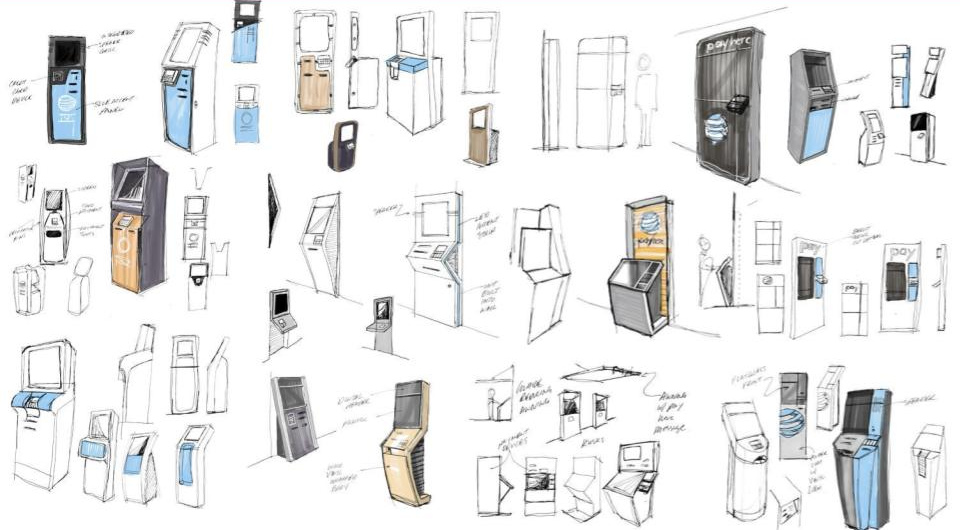
1. Enhanced Design and Engineering Collaboration
Our dedicated team engages with you from the outset, focusing on optimizing your digital kiosk designs for manufacturing excellence. With a deep dive into design refinement, manufacturability enhancement, and cost-saving strategies, we ensure your projects are not only viable but also set for optimal performance and seamless production. This collaborative effort is pivotal in transforming your vision into a tangible, efficiently manufactured kiosk product.
2. Accelerated Prototyping and Iterative Development
Leveraging cutting-edge prototyping technology, REDYREF empowers you to swiftly validate designs and easily adapt to market needs, accelerating the development cycle. This capability is crucial for rapid market entry, allowing for the swift evolution of your self-service kiosk designs and minimizing the necessity for extensive and expensive revisions.
3. Comprehensive Supply Chain Optimization
Acknowledging the critical importance of supply chain reliability, our team provides complete management solutions encompassing material procurement, inventory control, and logistic strategies. Our objective is clear: to keep your projects moving toward an on-time completion, within your budget, ensuring a smooth and uninterrupted flow from concept to delivery.
4. Full-Spectrum Finishing, Assembly, and Integration Services
Our manufacturing services extend well beyond basic metal fabrication, including finishing, assembly, and integration options. From automated powder coating and custom finishes to the practical assembly and seamless integration of components, REDYREF ensures your digital kiosks are not only built to exacting standards but are fully functional and beautifully finished upon delivery.
5. Customized Packaging and Precision Delivery Solutions
We understand the nuances of product handling and logistics, so we design packaging and delivery strategies tailored to your specific requirements. This approach guarantees the protection of your kiosks during transit and helps ensure timely and safe delivery to the intended destination.

6. Rigorous Testing and Validation Protocols
Our team considers quality assurance to be one of the most important stages of kiosk manufacturing, implementing comprehensive testing and validation procedures to meet rigorous standards and as well as our customers' expectations. From functional and performance assessments to environmental and compliance verifications, including those for weather resistance, our thorough testing ensures your kiosks stand up to the demands of real-world applications.
7. Unwavering Technical Support and After-Sales Care
Our commitment extends beyond project completion, offering unparalleled technical support and after-sales services, including an industry-leading 1-year warranty. Whether addressing technical questions, providing troubleshooting assistance, or offering post-sales support, our team remains dedicated to your satisfaction and the enduring success of your self-service kiosks.
By choosing REDYREF for your kiosks, you're not simply choosing a manufacturer; you're embracing a partnership with a full-service provider dedicated to making every aspect of your project run as smoothly as possible for you. Let us help guide you from concept through completion, ensuring efficiency, reducing lead times, and providing the peace of mind that comes from working with an industry leader.
REDYREF is setting industry standards in self-service kiosk manufacturing, not just through innovative design and robust functionality but also by enhancing the longevity and aesthetic appeal of our products. A key factor in this commitment to excellence is our in-house automated powder coating capabilities, available across all four of our American manufacturing facilities. This strategic move underscores our dedication to delivering top-tier kiosk solutions with superior finishes that stand the test of time.
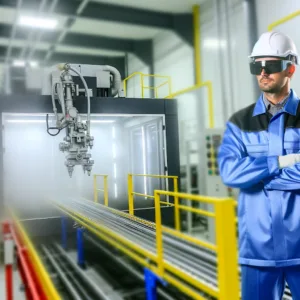
Why In-House Powder Coating Matters
- Quality Control: REDYREF's in-house powder coating ensures each kiosk component receives the attention to detail it requires, from start to finish. This control over the process translates into products that not only meet but exceed industry standards, offering reliability, durability, and visual appeal.
- Enhanced Efficiency: Integrating powder coating into the manufacturing process eliminates the need for outsourcing, dramatically reducing lead times. This efficiency empowers us to meet tight deadlines and rapidly deliver high-quality kiosks to the market.
- Cost Effectiveness: By avoiding third-party services, transportation, and coordination fees, our automated powder coating capabilities significantly reduce costs. These savings are then passed on to clients, making kiosk projects more budget-friendly without compromising on quality.
- Customization Flexibility: Offering a wide range of colors, textures, and finishes, powder coating allows for unparalleled customization. This flexibility ensures that each kiosk can be tailored to specific branding requirements and aesthetic preferences, setting REDYREF's products apart from the competition.
- Local Advantage: For clients near our facilities in New Jersey, Texas, New Hampshire, and Pennsylvania, localized services mean quicker turnarounds and enhanced collaboration. This proximity fosters stronger client relationships and ensures projects are completed with precision and speed.
The Technical Side of Automated Powder Coating
REDYREF's automated powder coating fuse the latest technology with precision in metal finishing. Engineered for peak efficiency and uniform coverage, these lines employ a sophisticated process where powder particles are electrostatically charged. This ensures a strong, even adhesion to kiosk surfaces, a critical step before the components enter high-temperature ovens for curing. The result is a finish with unparalleled durability, resistant not only to chipping, scratching, and fading but also fortified against corrosion, moisture, and UV damage, providing an additional safeguard against environmental wear, whether the kiosks were intended for use indoors or out.
This state-of-the-art process also allows for a thicker, more consistent coating compared to traditional liquid painting methods, without runs or sags, ensuring every nook and cranny is protected. The precision control over the powder's application thickness further enhances kiosks' lifespan and aesthetic appeal. Additionally, our powder coating technology can produce a wide range of finishes, from smooth and glossy to textured and matte, enabling customization to client specifications while maintaining the integrity of the protective coat.
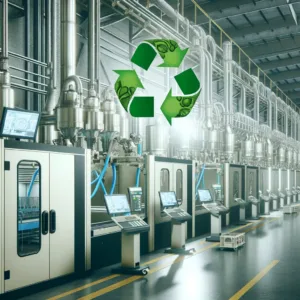
Environmental Benefits of Powder Coating
Beyond surface level benefits, powder coating is inherently more environmentally friendly than many other processes, like wet paint finishing, producing negligible volatile organic compounds (VOCs) and waste in comparison. Excess powder can be reclaimed and reused, minimizing loss and promoting a sustainable production cycle. This efficiency, coupled with the reduced need for solvent-based cleaners and thinners, underscores REDYREF's commitment to eco-friendly manufacturing practices.
In integrating automated powder coating into its manufacturing repertoire, we not only elevate the quality and durability of its kiosk products but also demonstrate a commitment to innovative, sustainable production methods. This helps ensure that we remain at the forefront of the kiosk manufacturing industry, offering solutions that are not only technologically advanced but also environmentally conscious and tailored to meet the evolving needs of clients.
Looking Ahead
As we take a look at our achievements in kiosk manufacturing, the inclusion of in-house automated powder coating in each of our facilities highlights our role as a forward-thinking leader in the industry. This capability not only enhances the product quality but also illustrates REDYREF's holistic approach to innovation, efficiency, and customer satisfaction.
For businesses seeking state-of-the-art kiosk solutions that blend functionality with durability and design, our comprehensive, turnkey manufacturing approach offers a compelling advantage. Discover how partnering with REDYREF can elevate your kiosk project by exploring our services and capabilities today.
As a trailblazer in the kiosk manufacturing industry, REDYREF is one of the few American kiosk companies to possess its own comprehensive manufacturing facilities across the U.S. This strategic advantage enables us to provide unparalleled customization and agility in production, emphasizing our commitment to cutting-edge innovation and superior quality.
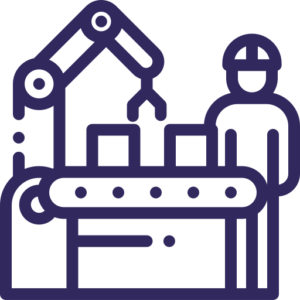
Embracing Smart Automation
The Impact of Smart Automation on Manufacturing
Smart automation elevates productivity and operational efficiency, enabling REDYREF to maintain competitive pricing and deliver cost-effective outcomes. It ensures rigorous quality control for products that meet the highest standards and guarantees process stability, with each item produced adhering precisely to our clients' specifications.
REDYREF’s commitment to automation is evident in our selective investment in machinery that significantly benefits its operations and customer satisfaction, such as:
- Robotic Press Brakes: The use of robotic press brakes, like the Amada HG 1003 ARs, showcases automation's role in speeding up production without sacrificing accuracy.
- CNC Machining Centers: REDYREF’s deployment of state-of-the-art CNC centers highlights our dedication to precision and efficiency. This technology enables the fabrication of complex parts to exacting standards. A pivotal addition to our automation arsenal is the Automatic Tool Changer (ATC) technology, especially within our CNC machining operations. ATCs significantly reduce machine downtime by swiftly changing tools between operations, streamlining production, and ensuring a consistent quality level. This innovation not only enhances our manufacturing efficiency but also allows our skilled technicians to focus on complex, value-added tasks, elevating the overall quality of our kiosk solutions.
- Welding Robots: Robotic welding cells enhance precision and efficiency in metal joining processes, significantly improving weld quality and consistency while reducing production time and labor costs.
- Automated Powder Coating Lines: Automating the powder coating process ensures uniform, high-quality finishes on products, increases throughput, minimizes human error, and enhances durability against wear, corrosion, and environmental factors, leading to superior product longevity and aesthetic appeal.
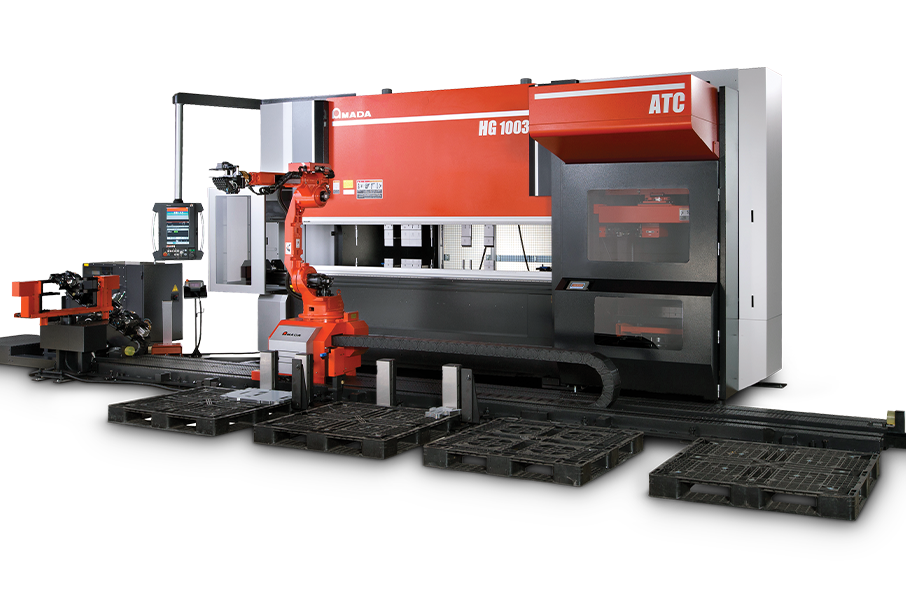
The Advantages of Automation for Our Customers
The integration automated solutions not only means our clients benefit from faster, more accurate order fulfillment, but also from enhanced efficiency that facilitates quicker market entry for products at reduced costs. Additionally, the consistency and high quality ensured by automation minimize the need for reworks, further driving down expenses and elevating customer satisfaction. This seamless integration of technology into manufacturing processes allows REDYREF to tailor kiosk solutions more closely to out clients' needs, ensuring a competitive edge in their respective markets.
Forward Vision
Ready to learn more about REDYREF and and how our forward-thinking manufacturing approaches are redefining kiosk production? Contact us today!
The rise of digital payment kiosks has dramatically altered the way businesses handle transactions, from restaurants to convenience stores. These self-service kiosks offer convenience, speed, and efficiency, but they also raise a number of questions for businesses that are considering their implementation. Below, we'll explore some of the most common queries we receive about digital payment kiosks and provide detailed insights to help you understand their benefits and challenges.
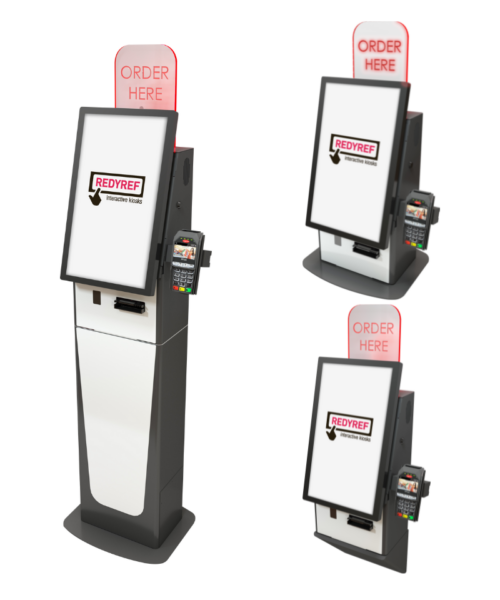
Understanding Digital Payment Kiosks
Before diving into specific questions, it's essential to understand what digital payment kiosks are. These are standalone devices equipped with specialized software and hardware that enable customers to make payments for goods or services. They can be found in various settings, such as retail stores, restaurants, and transportation hubs.
Common Questions About Digital Payment Kiosks
1. How Secure Are Digital Payment Kiosks?
Security Concerns Addressed: A primary concern for both businesses and consumers is the security of digital payment kiosks. These kiosks employ advanced security measures, including encrypted transactions, secure network connections, and compliance with Payment Card Industry Data Security Standards (PCI DSS). Regular software updates and maintenance are also crucial to protect against new threats.
2. What Payment Options Do They Support?
Versatility in Payment Processing: Modern kiosks are designed to accept multiple forms of payment, including credit and debit cards, mobile payments (like Apple Pay and Google Wallet), and sometimes even cash. This flexibility caters to a broader range of customer preferences, making transactions more convenient for various users.
3. How User-Friendly Are These Kiosks?
Ease of Use: Digital payment kiosks are generally designed with user experience in mind. They feature intuitive interfaces, clear instructions, and responsive touchscreens. Some kiosks even provide multilingual support to cater to diverse customer bases.
4. Can Digital Kiosks Integrate with Existing Business Systems?
Integration Capabilities: Integration with existing POS (Point of Sale) systems and business software is a key consideration. Most modern kiosks are built to seamlessly integrate with various business systems, allowing for efficient data synchronization and management.
5. What Are the Maintenance and Upkeep Requirements?
Maintenance Needs: Regular maintenance is vital for the optimal functioning of digital kiosks. This includes software updates, hardware checks, and occasional repairs. Many vendors offer maintenance services as part of their package, easing the burden on the business.
6. How Do Digital Payment Kiosks Enhance Customer Experience?
Improving Customer Engagement: Digital kiosks can significantly enhance customer experience by reducing wait times, offering personalized interactions, and providing a more streamlined transaction process. They can also be used for promotional purposes, displaying ads, and offering customized deals to customers.
7. What Is the ROI Potential when Implementing Digital Kiosks?
Assessing Financial Implications: The initial investment in digital kiosks can be significant, but they often lead to long-term savings through reduced labor costs and increased sales efficiency. Businesses should conduct a thorough cost-benefit analysis to determine the potential ROI.
8. How Do Kiosks Handle Customer Data and Privacy?
Privacy and Data Handling: Digital kiosks must comply with data protection regulations, ensuring customer data is handled securely and ethically. Transparency in data usage and having robust data protection policies in place are critical for maintaining customer trust.
Digital payment kiosks represent a significant advancement in transactional technology, offering numerous benefits to businesses and customers alike. However, understanding their security, user-friendliness, integration capabilities, maintenance requirements, and impact on customer experience is crucial for any business considering their implementation. By addressing these common questions, businesses can make informed decisions about incorporating digital payment kiosks into their operations, ensuring they harness their full potential while navigating the challenges they present.
As the world moves swiftly towards cashless transactions, cash-to-card kiosks and reverse ATMs are emerging as pivotal technologies that seamlessly link traditional cash handling with our digital economy. These innovative devices are simplifying the transition for many, acting as a crucial bridge for users who may not be fully integrated into the digital banking system.
What are Cash-to-Card Kiosks and Reverse ATMs?
Given the novelty of these technologies, it's natural for users to have questions about how these machines work, their safety, and where they can be found. Below, we'll dive into the most common queries surrounding cash-to-card kiosks and reverse ATMs, starting with a basic understanding of what these machines are and how they function—cash-to-card machines convert tangible cash into digital funds on a prepaid card, while reverse ATMs deposit cash directly into a user's bank account or digital wallet.
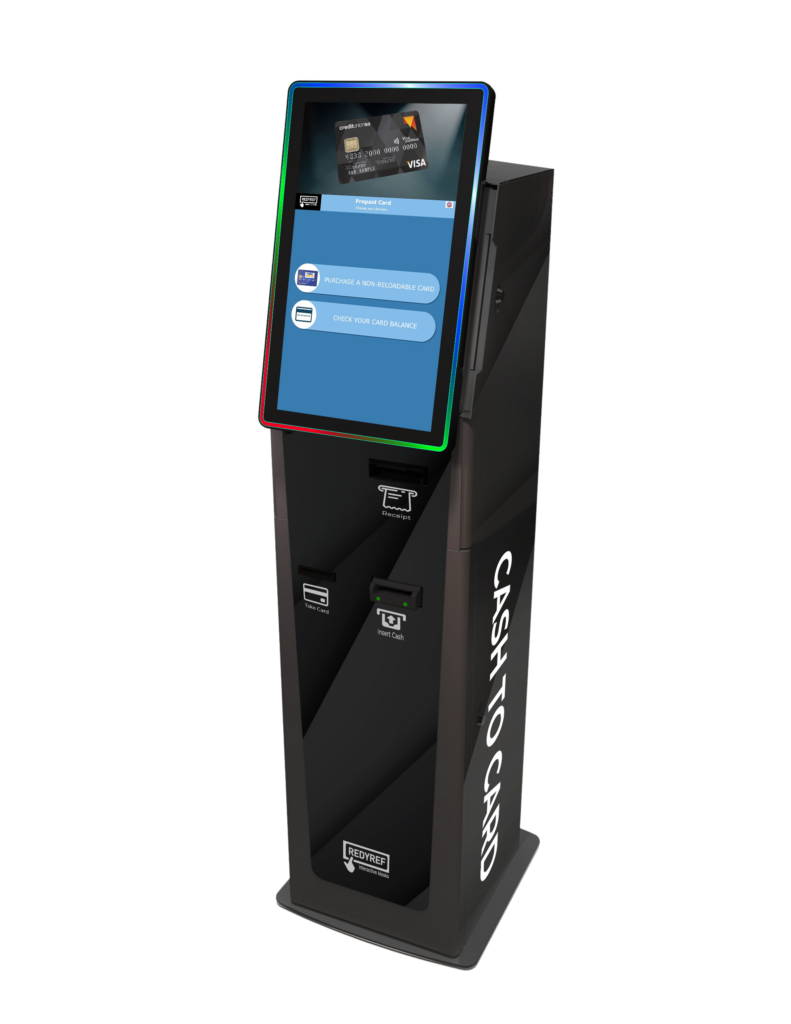
10 Common Questions and Answers About Cash-to-Card Kiosks and Reverse ATMs
1. How Do These Machines Work?
Let's break down how these devices operate. Cash-to-card kiosks are pretty straightforward: you feed the machine cash, and it loads the equivalent amount onto a prepaid card—almost like magic, but it's all technology! Reverse ATMs work on a similar principle, but instead of a card, the cash you deposit is credited directly to your chosen digital account. It's user-friendly and designed for quick, hassle-free transactions.
2. Are They Safe to Use?
You might wonder about the security of depositing your cash into a machine. Well, rest assured, these kiosks are built like little fortresses. Each transaction is encrypted to shield your financial data from prying eyes, and the physical machines are often monitored to thwart any tampering or fraudulent attempts. You can use these services with confidence, knowing your money is in safe hands.
3. Where Can I Find These Machines?
If you're looking to find one of these kiosks, you're in luck—they're popping up everywhere! You’ll typically find cash-to-card kiosks and reverse ATMs in places like shopping centers, airports, and event venues, even fairs and festivals. Some banks are also jumping on board and offering these services to make life easier for their customers.
4. What Fees are Involved?
Now, about those fees—yes, there are usually some costs associated with using these services. Fees can vary depending on the provider, often involving a small transaction charge. It’s a good idea to check out the fee structure beforehand so there are no surprises.
5. What are the Benefits?
The perks of using these machines are pretty compelling. They offer incredible convenience, especially if you're someone who prefers dealing with cash or if you find yourself without easy access to traditional banking services. They're also a boon for travelers needing to switch their cash into a usable form without the usual hassle.
6. Can I Reload a Prepaid Card at These Kiosks?
Yes! Many cash-to-card kiosks offer the functionality to reload prepaid cards, not just issue new ones. This can be very handy for regular users who want to keep using the same card without the need for multiple pieces of plastic.
7. Are There Limits to How Much I Can Convert?
Absolutely, there are limits—mostly for security reasons. The amount of cash you can convert in a single transaction varies depending on the provider and location, so it’s worth checking this out before you initiate a transaction.
8. What Happens If a Transaction Fails?
No need to panic if something goes wrong. Both reverse ATMs and cash-to-card kiosks are designed to handle glitches gracefully. Typically, the machine will either refund your cash immediately or provide instructions on how to contact customer service to resolve the issue.
9. Can I Use These Services Without a Bank Account?
One of the great advantages of these kiosks is that they don't require a bank account to use. This makes them particularly valuable for unbanked individuals, allowing them to participate in digital transactions and enjoy the benefits of modern financial services.
10. Is My Personal Information Safe?
When it comes to your personal information, privacy is paramount. Rest assured that your data is protected with robust encryption and compliance with strict privacy regulations. Providers are deeply committed to ensuring that your personal details are safe from unauthorized access.
Cash-to-card kiosks and reverse ATMs are not just convenient financial tools—they represent a significant evolution towards integrating the convenience of digital transactions with the widespread availability of cash. By offering secure, simple, and accessible options, these machines bridge the gap between traditional and digital economies, providing a flexible and modern solution for managing your finances in today's digital world. Whether you're a traveler, someone without a traditional bank account, or simply prefer dealing in cash, these kiosks are designed to meet a variety of needs in an increasingly digital financial landscape.
Automated Teller Machines (ATMs) have come a long way since their inception, evolving from simple cash dispensers to sophisticated devices facilitating a wide array of financial transactions. One of the latest advancements in this journey is the introduction of reverse ATM functionalities, marking a significant shift in how individuals interact with them.
The Birth of ATMs: A Cash-Dispensing Revolution
ATMs were first introduced in the late 1960s, with the first installation at Barclays Bank in London in 1967. Early ATMs were primarily cash dispensers, allowing customers to withdraw a set amount of money using a plastic card and a personal identification number (PIN). This innovation revolutionized banking by providing a convenient alternative to in-branch transactions.
As technology advanced, so did the capabilities of ATMs. In the 1980s and 1990s, banks started introducing basic transactional features such as balance inquiries and fund transfers between accounts. These enhancements aimed to offer customers greater control over their finances while reducing the need for visits to brick-and-mortar branches. The late 20th century witnessed the incorporation of multimedia elements, including color screens and audio instructions, improving accessibility for users with varying needs. Simultaneously, advancements in encryption and security measures became paramount to protect users from fraud and unauthorized access.
The 21st century ushered in a new era of ATMs that embraced digital advancements. Deposit-taking ATMs emerged, allowing customers to insert cash and checks directly into the machine without the need for an envelope. This innovation aimed to streamline the deposit process, making it more efficient for users.
Reverse ATM Functionalities: Redefining Cash Transactions
The latest chapter in the evolution of ATMs involves the integration of reverse functionalities. Unlike traditional ATMs that dispense cash, reverse ATMs allow users to deposit cash into their accounts, extending the self-service capabilities of these machines. This shift addresses the changing dynamics of consumer behavior and the need for more versatile banking solutions. Reverse ATMs also allow users to deposit cash at any time and convert it to a digital card, such as a Mastercard pre-paid debit. These cards can be used anywhere Mastercard is accepted, from restaurants to retail stores.
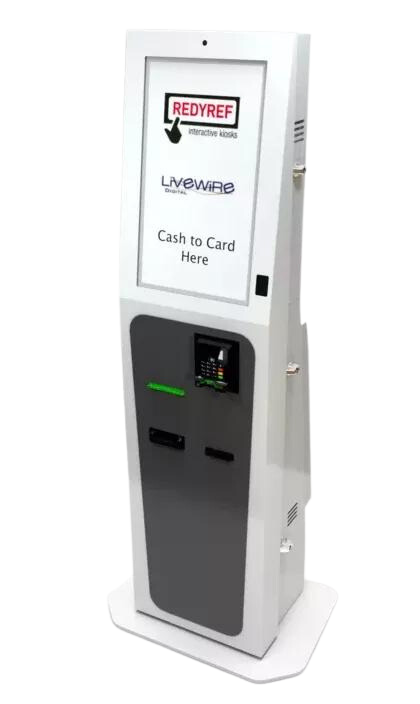
The Future of ATMs: A Convergence of Technologies
Looking ahead, the evolution of ATMs is likely to continue, with advancements in technology playing a pivotal role. The integration of artificial intelligence, blockchain, and contactless technologies may further redefine the user experience, making transactions even more seamless and secure. These advances reflect the ongoing efforts of the banking industry to meet the changing needs of consumers. As these machines continue to adapt, they will remain a cornerstone of modern banking, providing users with convenient and efficient options to access financial services. The introduction of reverse ATM functionalities is just one more chapter in the their journey, with more exciting changes yet to come.
Considering a Reverse ATM for your business? REDYREF has a range of cash-to-card and reverse ATM kiosks available. Contact us today to learn more!
REDYREF Interactive Kiosks proudly announces the successful acquisition of Livewire Digital, enhancing its position as a leader in self-service kiosk technology. This strategic partnership solidifies their commitment to delivering cutting-edge customer engagement solutions across diverse industries. Together, they aim to revolutionize customer engagement, offering unmatched, end-to-end kiosk solutions.
Riverdale, New Jersey, December 5, 2023 /PRNewswire-PRWeb/ --
REDYREF Interactive Kiosks, a leading
self-service kiosk technology manufacturer, proudly announces the successful acquisition of
Livewire Digital, a renowned provider of interactive kiosk software and services. This strategic partnership represents a significant milestone for both companies, reinforcing their commitment to delivering cutting-edge customer engagement solutions across diverse industries.
REDYREF, a key player in the digital kiosk industry, is known for its innovative hardware and enclosures tailored to evolving business needs. With the acquisition of Livewire, REDYREF enhances its capabilities in self-service software and solutions, solidifying its position as a comprehensive interactive technology provider.
This collaboration brings together two industry leaders with complementary strengths and expertise. Livewire Digital's track record in kiosk software development aligns seamlessly with REDYREF's vision of providing captivating and customer-connecting indoor and outdoor interactive kiosks. The combined forces of REDYREF and Livewire Digital will drive the development of next-generation self-service solutions, leveraging cutting-edge technology to enhance customer interactions and operational efficiency.
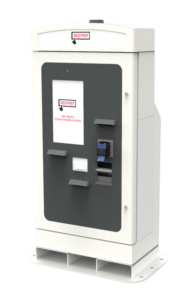
William Pymm, VP and Managing Partner, states, "The acquisition of Livewire Digital represents a significant step forward for REDYREF. We are excited to merge our strengths to deliver more compelling customer experiences. By integrating Livewire Digital's software expertise with REDYREF's
kiosk enclosures, we offer unmatched, end-to-end kiosk solutions, from
reverse ATMs to
self-ticketing.”
David McCracken, founder and CEO of Livewire, says, “We are thrilled to be part of the REDYREF team. This acquisition marks an exciting chapter in our company’s journey. By combining our software expertise with REDYREF's kiosk design and manufacturing, we are poised to revolutionize customer engagement. This is a remarkable opportunity to unlock the full potential of self-service.”
Both companies, known for their customer-centric approach, emphasize understanding the unique needs of businesses in various industries. Together, REDYREF and Livewire Digital will have an expanded capacity to deliver tailored interactive experiences for industries such as retail, hospitality, healthcare, entertainment, and transportation. The combined expertise, resources, and commitment to innovation of the two companies will empower businesses to redefine customer interactions, elevate their brands, and drive meaningful outcomes.
--
About REDYREF Interactive Kiosks:
REDYREF Interactive Kiosks is a leading manufacturer of innovative self-service kiosks. With a wide range of cutting-edge interactive kiosks, software applications, and turnkey services, REDYREF enables businesses to deliver exceptional customer experiences across various industries. Learn more at REDYREF.com.
About Livewire Digital:
Livewire Digital is a renowned provider of interactive self-service software and services. With expertise in developing innovative software and transaction-based solutions, Livewire Digital helps businesses engage end users, streamline operations, and enhance customer service. Learn more at LivewireDigital.com.
















